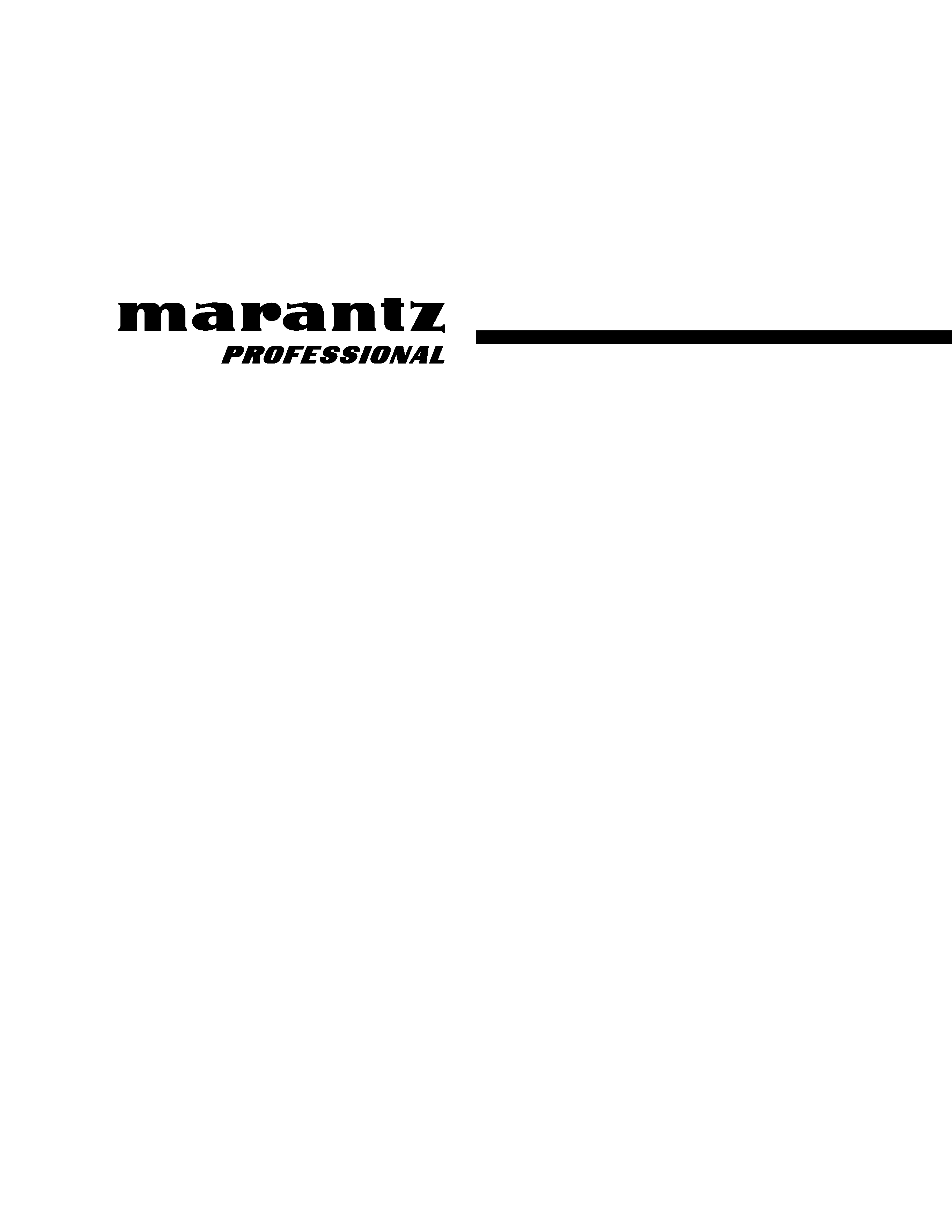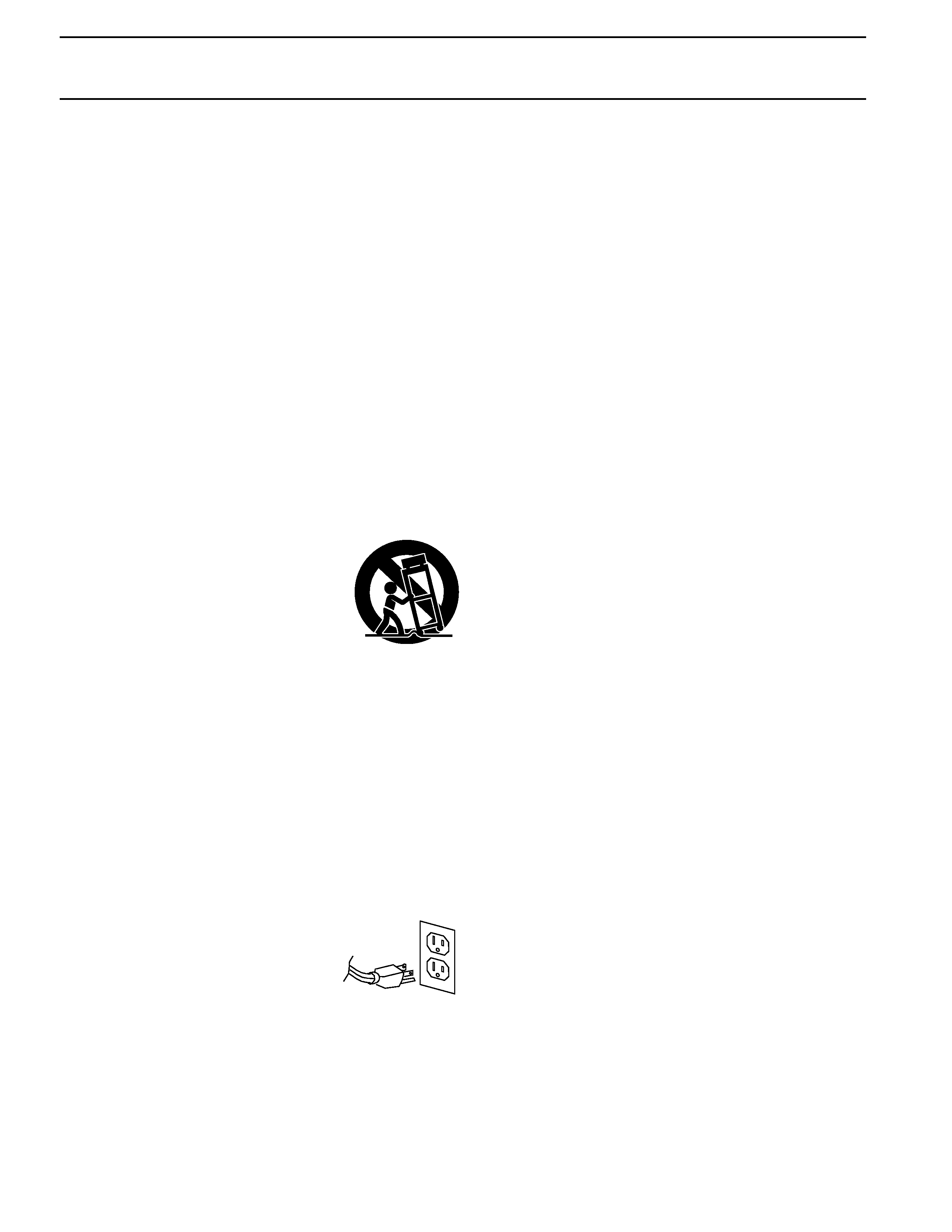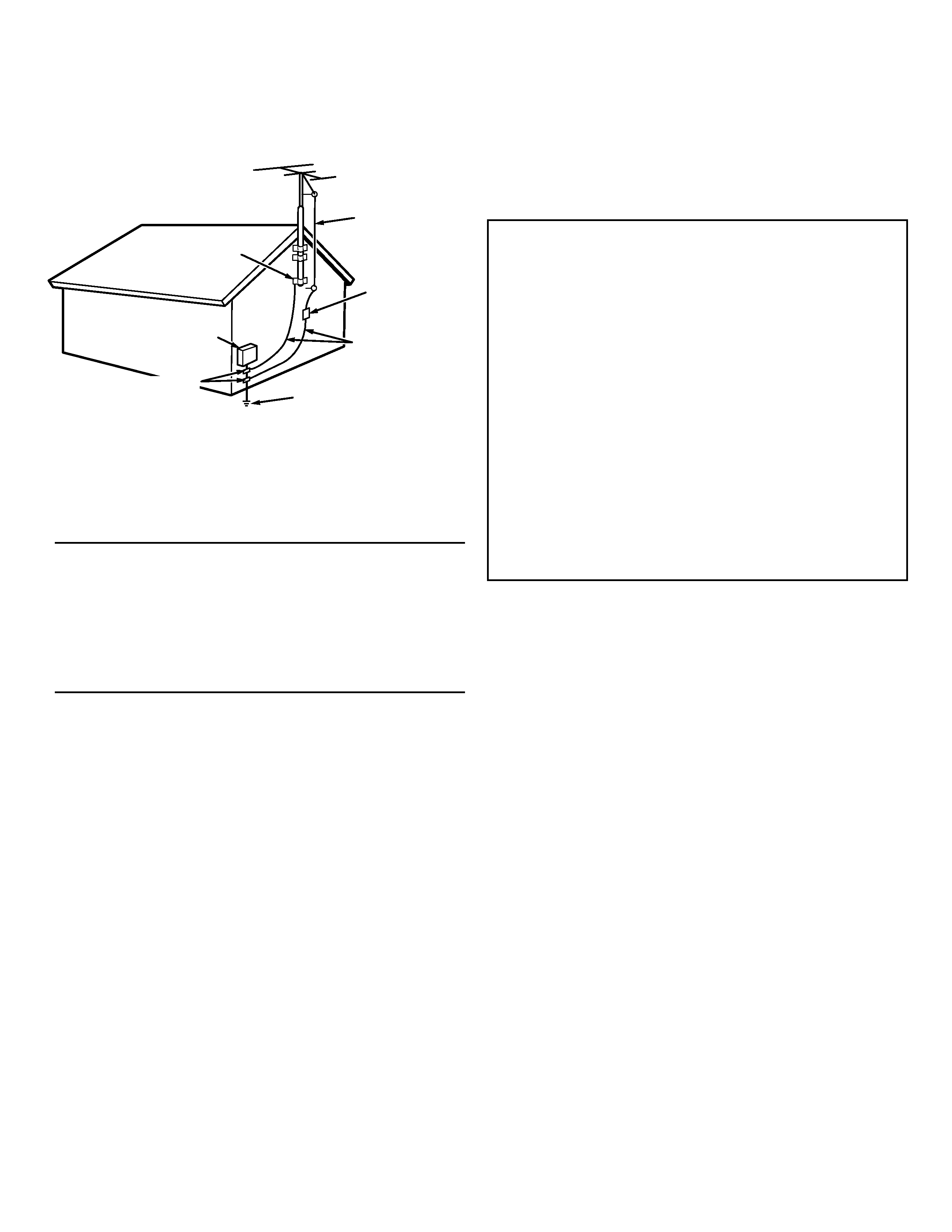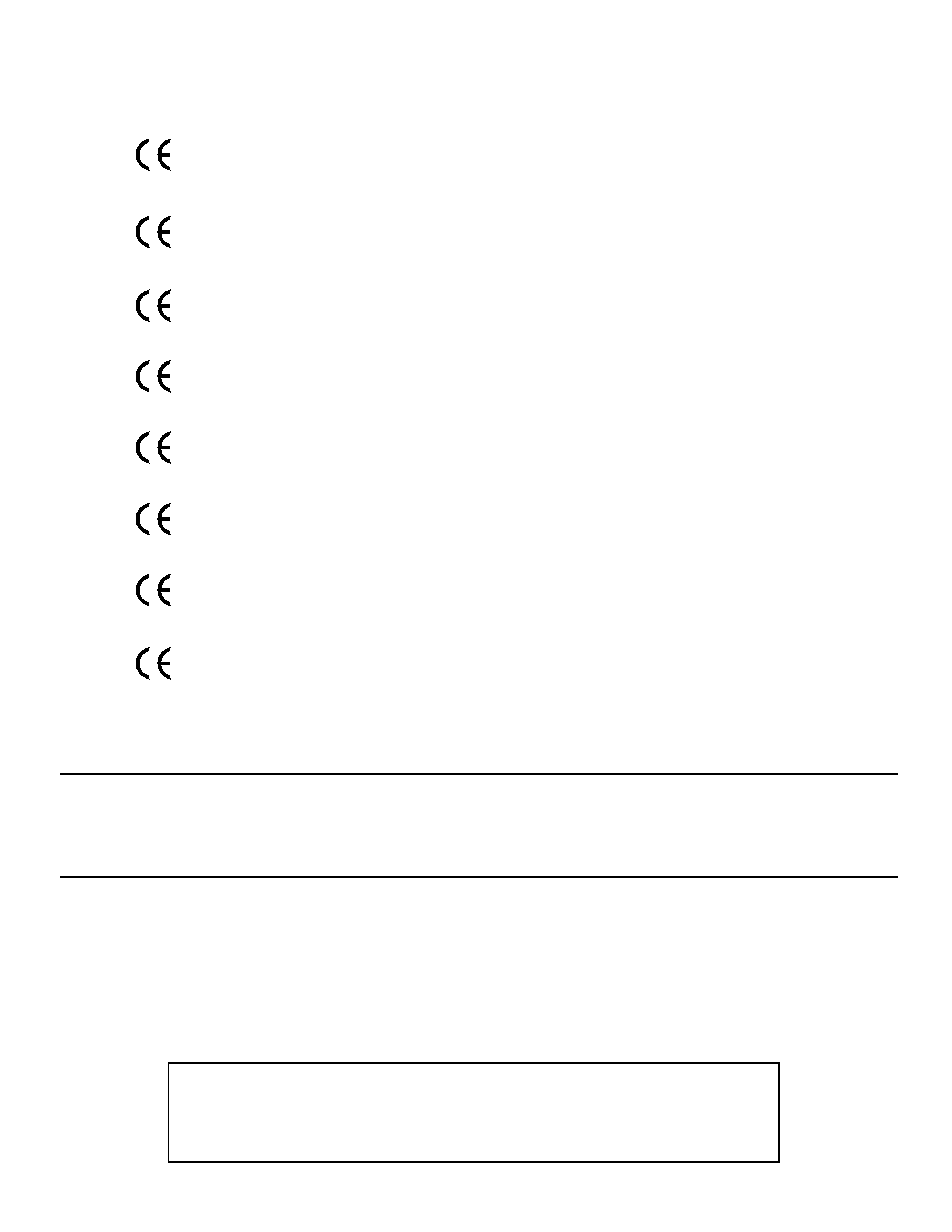
Model PMD560 User Guide
Solid State Recorder

CAUTION
RISK OF ELECTRIC SHOCK
DO NOT OPEN
CAUTION: TO REDUCE THE RISK OF ELECTRIC SHOCK,
DO NOT REMOVE COVER (OR BACK).
NO USER-SERVICEABLE PARTS INSIDE.
REFER SERVICING TO QUALIFIED SERVICE PERSONNEL.
The lightning flash with arrowhead symbol within an
equilateral triangle is intended to alert the user to the
presence of uninsulated "dangerous voltage" within the
product's enclosure. It may be of sufficient magnitude to
constitute a risk of electric shock to persons.
WARNING
TO REDUCE THE RISK OF FIRE OR ELECTRIC SHOCK,
DO NOT EXPOSE THIS PRODUCT TO RAIN OR MOISTURE.
CAUTION:
USE OF CONTROLS OR ADJUSTMENTS OR PERFORMANCE OF
PROCEDURES OTHER THAN THOSE SPECIFIED HEREIN MAY RESULT
IN HAZARDOUS RADIATION EXPOSURE.
The exclamation point within an equilateral triangle is
intended to alert the user to the presence of important
operating and maintenance (servicing) instructions in
the literature accompanying the product.

IMPORTANT SAFETY INSTRUCTIONS
READ BEFORE OPERATING EQUIPMENT
This product was designed and manufactured to meet strict quality and safety standards. There are, however, some
installation and operation precautions, which you should be particularly aware of.
1. Read Instructions All the safety and operating instructions
should be read before the product is operated.
2. Retain Instructions The safety and operating instructions
should be retained for future reference.
3. Heed Warnings All warnings on the product and in the
operating instructions should be adhered to.
4. Follow Instructions All operating and use instructions should
be followed.
5. Cleaning Unplug this product from the wall outlet before
cleaning. Do not use liquid or aerosol cleaners. Use a damp
cloth for cleaning.
6. Attachments Do not use attachments not recommended by
the product manufacturer as they may cause hazards.
7. Water and Moisture Do not use this product near waterfor
example, near a bath tub, wash bowl, kitchen sink, laundry tub,
swimming pool, in a wet basement, and the like.
8. Accessories Do not place this product on an unstable cart,
stand, tripod, bracket, or table. The product may fall, causing
serious injury to a child or adult, and serious damage to the
product. Use only with a cart, stand, tripod, bracket or table
recommended by the manufacturer, or sold with the product.
Any mounting of the product should follow the manufacturer's
instructions, and should use a mounting accessory
recommended by the manufacturer.
9. A product and cart combination should be
moved with care. Quick stops, excessive
force, and uneven surfaces may cause the
product and cart combination to overturn.
10. Ventilation Slots and openings in the
cabinet are provided for ventilation, to
ensure reliable operation of the product and
to protect it from overheating. These openings must not be
blocked or covered. The openings should never be blocked by
placing the product on a bed, sofa, rug, or other similar surface.
This product should not be placed in a built-in installation such
as a bookcase or rack unless proper ventilation is provided and
the manufacturer's instructions have been adhered to.
11. Power Sources This product should be operated only from
the type of power source indicated on the marking label. If you
are not sure of the type of power supply to your home, consult
your product dealer or local power company. For products
intended to operate from battery power or other sources, refer
to the operating instructions.
12. Power Cord Protection Power supply cords should be routed
so that they are not likely to be walked on or pinched by items
placed upon or against them. Pay particular attention to cords
at plugs, convenience receptacles, and the point where they
exit from the product.
13. Grounding or Polarization This product
may be equipped with a grounded
polarized alternating-current line plug (a
plug having one blade wider than the
other and a ground prong). This plug will
fit into the power outlet only one way. This
is a safety feature. If you are unable to
insert the plug fully into the outlet, contact your electrician to
replace your obsolete outlet. Do not defeat the safety purpose
of the polarized plug.
14. Protective Attachment Plug The product is equipped with an
attachment plug having overload protection. This is a safety
feature. See Instruction Manual for replacement or resetting of
protective device. If replacement of the plug is required, be sure
the service technician uses a replacement plug specified by the
manufacturer with the same overload protection as the original
plug.
15. Outdoor Antenna Grounding If an outside antenna or cable
system is connected to the product, be sure the antenna or
cable system is grounded so as to provide some protection
against voltage surges and built-up static charges. Article 810
of the National Electrical Code, ANSI/NFPA 70, provides
information with regard to proper grounding of the mast and
supporting structure, grounding of the lead-in wire to an
antenna discharge unit, size of grounding conductors, location
of antenna-discharge unit, connection to grounding electrodes,
and requirements for the grounding electrode. See Figure 1.
16. Lightning Unplug the unit from the wall outlet and disconnect
the antenna or cable system for added protection during a
lightning storm, or when it is left unattended and unused for
long periods of time. This will prevent damage to the product
due to lightning and power line surges.
17. Power Lines An outside antenna system should not be
located in the vicinity of overhead power lines, other electric
light or power circuits, or where it can fall into such power lines
or circuits. When installing an outside antenna system, extreme
care should be taken to keep from touching such power lines or
circuits, as contact with them might be fatal.
18. Overloading Do not overload wall outlets, extension cords, or
integral convenience receptacles as this can result in a risk of
fire or electric shock.
19. Object and Liquid Entry Never push objects of any kind into
this product through openings as they may touch dangerous
voltage points, or short-out parts that could result in a fire or
electric shock. Never spill liquid of any kind on the product.
20. Servicing Do not attempt to service this product yourself as
opening or removing covers may expose you to dangerous
voltage or other hazards. Refer all servicing to qualified service
personnel.
21. Damage Requiring Service Unplug this product from the wall
outlet and refer servicing to qualified service personnel under
the following conditions:
a. When the power supply cord or plug is damaged.
b. If liquid has been spilled, or objects have fallen into the product.
c. If the product has been exposed to rain or water.
d. If the product does not operate normally by following the
operating instructions. Adjust only those controls that are
covered by the operating instructions. Improper adjustment of
other controls may result in damage and will often require
extensive work by a qualified technician to restore the product
to its normal operation.
e. If the product has been dropped or damaged in any way.
f. When the product exhibits a distinct change in performance.
22. Replacement Parts When replacement parts are required, be
sure the service technician uses replacement parts specified by
the manufacturer or having the same characteristics as the
original part. Unauthorized substitutions may result in fire,
electric shock, or other hazards.
23. Safety Check Upon completion of any service or repairs to
this product, ask the service technician to perform safety
checks to determine that the product is in proper operating
condition.
24. Wall or Ceiling Mounting The product should be mounted to a
wall or ceiling only as recommended by the manufacturer.
25. Heat The product should be situated away from heat sources
such as radiators, heat registers, stoves, or other products
(including amplifiers) that produce heat.

NOTE TO CATV SYSTEM INSTALLER:
This reminder is provided to call the CATV (Cable-TV)
system installer's attention to Article 820-40 of the NEC.
This article provides guidelines for proper grounding
and, in particular, specifies that the cable ground shall
be connected to the grounding system of the building, as
close to the point of cable entry as practical.
NOTE:
This equipment has been tested and found to comply
with the limits for a Class B digital device, pursuant to
Part 15 of the FCC Rules. These limits are designed to
provide reasonable protection against harmful
interference in a residential installation. This equipment
generates, uses, and can radiate radio frequency
energy. If it is not installed and used in accordance with
these instructions, it may cause harmful interference to
radio communications. However, there is no guarantee
that interference will not occur in any particular
installation. If this equipment does cause harmful
interference to radio or television reception, which can
be determined by turning the equipment off and on, the
user is encouraged to try to correct the interference by
one or more of the following measures:
· Reorient or relocate the receiving antenna.
· Increase the separation between the equipment and
receiver.
· Connect the equipment to an outlet on a circuit
different from that which the receiver is connected.
· Consult the dealer or an experienced radio/TV
technician for help.
WARNINGS
Do not expose the equipment to rain or moisture.
Do not remove the cover from the equipment.
Do not insert anything into the equipment through
the ventilation holes.
Do not cover the ventilation with any items such as
tablecloths, newspapers, curtains, etc.
No naked flame sources, such as lighted candles,
should be placed on the equipment.
When setting up the recorder ensure that:
· it will not be exposed to interference from external
equipment.
· it will not be exposed to electrostatic discharges.
· it will not be exposed to direct sunlight.
· heavy objects are not placed on the recorder.
Copyright
Recording and playback of any material may require
consent. For further information refer to the following
US ordinances:
· Copyright act of 1956
· Dramatic and Musical Performance Act 1958
· Performers Protection Acts 1963 and 1972
· any subsequent statutory enactments and orders
NOTE:
Changes or modifications may cause this unit to fail to
comply with Part 15 of the FCC Rules and may void the
user's authority to operate the equipment.
FIGURE 1
EXAMPLE OF ANTENNA GROUNDING AS PER
NATIONAL ELECTRICAL CODE, ANSI/NFPA 70
NEC - NATIONAL ELECTRICAL CODE
Regulatory Compliance
ANTENNA LEAD IN
WIRE
ANTENNA
DISCHARGE UNIT
(NEC SECTION
810-20)
GROUNDING
CONDUCTORS(NEC
SECTION 810-21)
GROUND CLAMPS
POWER SERVICE GROUNDING
ELECTRODE SYSTEM
(NEC ART 250, PART H)
GROUND
CLAMP
ELECTRIC
SERVICE
EQUIPMENT
GROUND CLAMPS

CE marking (only EU version)
English
This product is in conformity with the EMC directive and low-voltage directive.
Français
Cet appareil est conforme á la directive EMC et á la de directive sur les basses tensions.
Deutsch
Dieses Gerät entspricht den EMC-Richtlinien und den Richtlinien für Niederspannungsgeräte.
Nederlands
Dit apparaat voldoet aan de EMC-richtlijnene en de richtlijnen vooor apparatuur met laag voltage.
Italiano
Quest' unitá è conforme alle direttive EMC ed alla direttiva sulle basse tensioni.
Português
Esta unidade está em conformidade com as directivas EMC e as directivas de baixa voltagem.
Español
Esta unidad estáde acuerdo con las normas EMC y las relacionadas con baja tensión.
Svenska
Produkten är tillverkad i enlighet med EMC-direktivet och direktivet för lågspänningsutrustning.
Equipment mains working system
This product complies with household power and safety requirements in your area.
This Class B digital apparatus complies with Canadian ICES-003.
Cet appareil numérique de la Classe B est conforme á la norme NMB-003 du Canada.
SI DICHIARA CHE L'APPARECCHIO SINTO-AMPLIFACATORE SR-39
RISPONDE ALLE PRESCRIZIONI DELL'ART. 2 COMMA 1 DEL D.M. 28
AGOSTO 1995 N° 548.
FATTO A EINDHOVEN, IL 1/1/1997.
MARANTZ EUROPE B.V.
5600 EINDHOVEN
THE NETHERLANDS
"Este aparato lleva elementos antiparasitarios necesarios para cumplir con los
limites que se establecen en el Anexo V del Reglamento sobre Pertubaciones
Radioelectricas e Interferencias aprobado en el Real Decreto 138/1989.
(B.O.E. de 9 Febrero 1989)."
